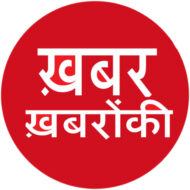
Ira Singh
Khabar Khabaron Ki,30 March’25
The Reserve Bank of India’s (RBI) Monetary Policy Committee (MPC) is likely to reduce the repo rate by 25 basis points (bps) in its upcoming April 9 policy meeting, as per a survey of economists, treasury heads, and fund managers. Experts believe that easing inflationary pressures provide the central bank room to prioritize economic growth while maintaining a neutral policy stance.
Experts Expect Rate Cut Amid Easing Inflation
The anticipated rate cut follows the RBI’s decision in February to reduce the repo rate by 25 bps—the first such move in five years. Analysts point to lower Consumer Price Index (CPI) inflation as a key factor that enables the central bank to focus on supporting demand amid ongoing global uncertainties.
“We expect the MPC’s focus to shift from inflation control to fostering economic growth. This should lead to a continuation of the rate-cutting cycle that began in February, with another 25 bps reduction expected in April. However, the committee may opt to retain its neutral stance to ensure flexibility in future policy actions,” noted a report by CareEdge.
Stance and Liquidity Considerations
While most experts expect the RBI to retain its neutral stance, some argue that an accommodative policy could facilitate smoother rate transmission across the financial system. Liquidity management remains a crucial aspect of the RBI’s approach, with recent improvements helping to ease money market rates. The policy statement is expected to emphasize liquidity comfort, reinforcing the central bank’s commitment to supporting financial stability.
Policy Tone and Inflation Projections
The policy announcement is likely to emphasize financial stability, with measures aimed at keeping liquidity conditions favorable. V. Ramachandra Reddy, Treasury Head at Karur Vysya Bank reportedly quoted as saying . “The RBI will likely adopt a dovish stance while providing reassurance on liquidity conditions”.
Regarding inflation, some experts anticipate a downward revision in projections due to lower food inflation. However, concerns over monsoon patterns and heatwaves could limit the extent of any downward revision.“FY25 CPI inflation estimate could be revised down marginally to 4.6 percent from the previous estimate of 4.8 percent. While there is a downside risk to the FY26 estimate of 4.2 percent, the RBI may retain it due to uncertainties surrounding monsoon patterns and other adverse weather events,” sated Gaura Sen Gupta, Economist at IDFC First Bank.
According to information,in its February policy, the RBI projected CPI inflation for FY25 at 4.8 percent and FY26 at 4.2 percent, assuming a normal monsoon. The downward revision in quarterly estimates reflects easing inflationary pressures, with Q4 FY25 and Q1 FY26 inflation projections already being adjusted downward.
Growth Outlook Remains Steady
On the economic growth front, the RBI is expected to retain its projections, despite global uncertainties posing potential downside risks.“We expect the RBI to maintain its FY26 GDP growth forecast at 6.7 percent while acknowledging potential downside risks,”said Aastha Gudwani, India Chief Economist at Barclays.
In its previous policy review, the RBI projected GDP growth at 6.7 percent for FY26, with Q1 growth at 6.7 percent, Q2 at 7 percent, and Q3 and Q4 at 6.5 percent each. The central bank expects robust Rabi crop production and an uptick in industrial activity to support economic growth in the coming fiscal year.
RBI Governor Sanjay Malhotra reportedly emphasized that economic fundamentals remain strong, with domestic demand and investment activity continuing to provide resilience despite external challenges. The upcoming policy decision will be closely watched for signals on the central bank’s future course of action in balancing growth and inflation dynamics.
